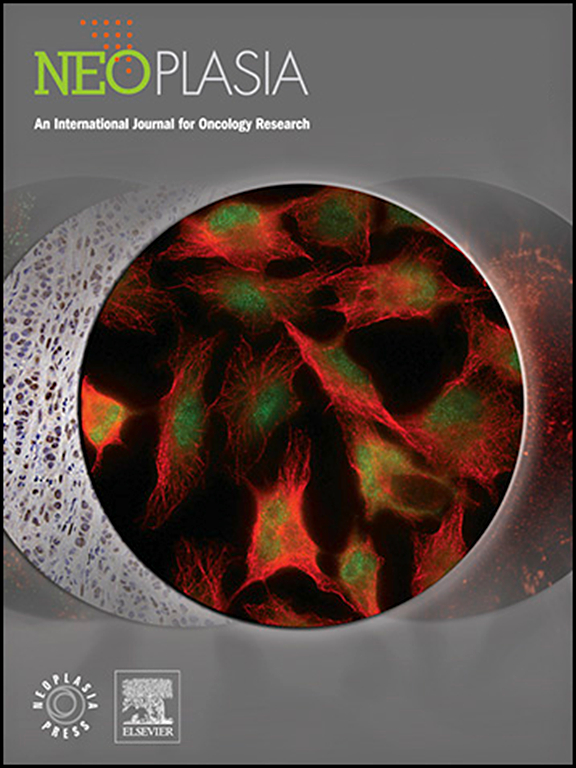新发心房颤动患者的癌症发病率和死亡率:基于人群的匹配队列研究
IF 4.8
2区 医学
Q1 Biochemistry, Genetics and Molecular Biology
引用次数: 0
摘要
背景:了解确诊其他疾病后的癌症风险可为早期诊断提供机会。我们研究了之前诊断出心房颤动(房颤)的癌症诊断风险:方法:使用关联的电子健康记录来识别年龄≥18 岁的新发房颤患者和年龄性别匹配的对照组。研究人员对心房颤动确诊后三个月内、三个月至五年内以及五年后的癌症累积发病率和死亡率(总体和癌症部位特异性)进行了检测。结果:队列包括 117173 名新发房颤患者和 117173 名匹配对照者(中位年龄为 78 岁)。在最初的三个月中,2.2%的房颤患者被诊断出患有癌症,而对照组的这一比例为 0.47%(相对风险:男性为 4.7 [95%CI 4.2-5.4],女性为 4.4 [95%CI 3.8-5.0])。近 80% 的癌症与胸部或腹部器官有关。累积发病率的差异仅在三个月至五年之间的女性中明显(亚分布危险比=1.1 [95%CI 1.01-1.12]),五年以上的所有患者中均无差异。MR分析不支持房颤与主要癌症亚型之间存在因果关系:结论:新发房颤后,癌症发病率和死亡率会在短期内大幅上升。结论:新发房颤后癌症发病率和死亡率在短期内大幅上升,这些发现可能反映了偶然发现的房颤或副肿瘤表现。新发房颤具有较高的短期癌症诊断风险,其水平与症状风险阈值相当,因此必须对疑似癌症进行紧急评估。本文章由计算机程序翻译,如有差异,请以英文原文为准。
Cancer incidence and mortality among patients with new-onset atrial fibrillation: A population-based matched cohort study
Background
Understanding the risk of cancer after the diagnosis of another condition can present opportunities for earlier diagnosis. We examined the risk of cancer diagnosis conditional on prior diagnosis of atrial fibrillation (AF).
Methods
Linked electronic health records were used to identify patients aged ≥18 with new-onset AF and age-sex-matched controls. Cumulative incidence of and mortality from cancer (overall and cancer-site specific) within three months, three months to five years and beyond five years from diagnosis of AF were examined. Findings were further validated using Mendelian randomisation (MR).
Results
The cohort included 117,173 patients with new-onset AF and 117,173 matched controls (median age 78). In the first three months, 2.2% of AF patients were diagnosed with cancer vs. 0.47% in controls (relative risk: 4.7 [95%CI 4.2-5.4] in men and 4.4 [95%CI 3.8-5.0] in women). Nearly 80% of cancers related to thoracic or abdominal organs. Differences in cumulative incidence were only evident in women between three months and five years (subdistribution hazard ratio=1.1 [95%CI 1.01-1.12]) and absent in all patients beyond five years. MR analysis did not support the presence of a causal association between AF and major cancer subtypes.
Conclusion
There is a large short-term increase in cancer incidence and mortality following new-onset AF. The findings may reflect incidental identification of AF or paraneoplastic manifestation. New-onset AF confers high short-term risk of cancer diagnosis, at levels comparable with symptomatic risk threshold mandating urgent assessment for suspected cancer.
求助全文
通过发布文献求助,成功后即可免费获取论文全文。
去求助
来源期刊

Neoplasia
医学-肿瘤学
CiteScore
9.20
自引率
2.10%
发文量
82
审稿时长
26 days
期刊介绍:
Neoplasia publishes the results of novel investigations in all areas of oncology research. The title Neoplasia was chosen to convey the journal’s breadth, which encompasses the traditional disciplines of cancer research as well as emerging fields and interdisciplinary investigations. Neoplasia is interested in studies describing new molecular and genetic findings relating to the neoplastic phenotype and in laboratory and clinical studies demonstrating creative applications of advances in the basic sciences to risk assessment, prognostic indications, detection, diagnosis, and treatment. In addition to regular Research Reports, Neoplasia also publishes Reviews and Meeting Reports. Neoplasia is committed to ensuring a thorough, fair, and rapid review and publication schedule to further its mission of serving both the scientific and clinical communities by disseminating important data and ideas in cancer research.
 求助内容:
求助内容: 应助结果提醒方式:
应助结果提醒方式:


